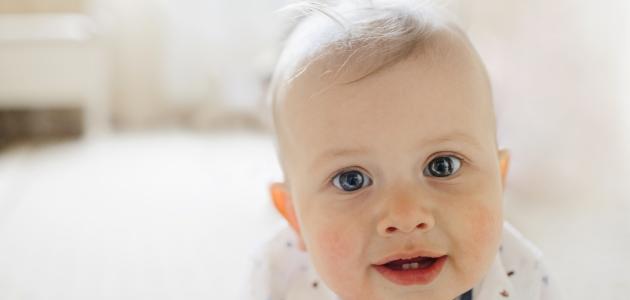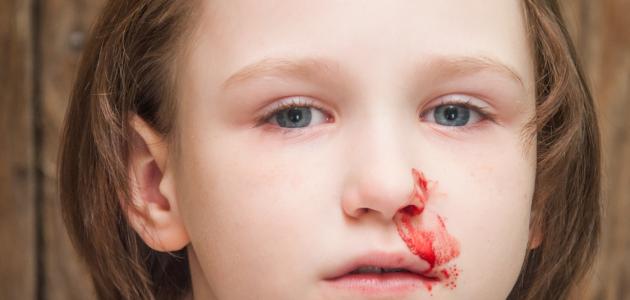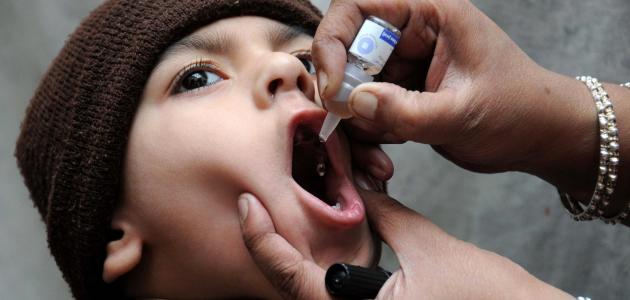Contents
Teething
Teething process is an integral part of the normal development of the child, and is represented by the rush of the milk teeth through the gums to find their way towards the outside, and the teething process usually begins during the age period that ranges between six to nine months of the child's life. Teething from one child to another, it is possible that the teething phase begins before or after that age, and the teething process is usually completed when the child reaches two and a half to three years of age, [1]It should be noted that the lower front teeth known as central incisors are the first teeth to appear usually, followed by the four upper teeth known as the central and lateral incisors after approximately four to eight weeks, and after about a month, the lower lateral incisors begin to appear. Then the first molar (grinder) appears, and the molars are back teeth that help chew food, followed by the appearance of the molars the appearance of the canines , which are the pointed teeth that grow in the upper jaw, and then twenty of the primary teeth of the child are completed with the completion of the third year Often age, [2] and it is worth noting that the teething phase may be accompanied by the emergence of a group of symptoms, and one of the good news is that these symptoms can usually be controlled by adhering to some advice and instructions from parents at home. [3]
Signs of teething in infants
The teething stage is one of the important stages in a child's life, and it may be accompanied by many symptoms and signs, but in a few cases it is possible that the teething stage is not accompanied by the appearance of any noticeable symptoms on the child, and the most important symptoms and signs that can appear on children at this stage : [4]
Excessive drooling
Drooling usually begins when the infant reaches the second month of life, because the salivary glands begin to perform their functions, and because children at this age do not have the ability to control the muscles of the neck, and also do not have teeth that help them to keep saliva in the mouth; Because all of this results in saliva coming out of the mouth, and this condition is known as drooling, and it is worth knowing that there are some cases in which salivation is more than the normal limit, and the teething process is one of the most common causes behind excessive salivation, as it turns out that drooling is It is often the first sign of teething, [5] but it should be noted that drooling accompanied by the appearance of signs of disease on the child may indicate a problem that requires a visit to the specialist doctor; These signs may be a sign that the child is having difficulty swallowing. [6]
Gum pain and redness
Among the symptoms that may be related to teething in children is also redness of the gums and the child's feeling of pain in it, especially when touching it directly or indirectly, [7] and swelling may occur at the site of the appearance of the tooth as well. [8]
Baby crying and agitation
The child expresses his annoyance by crying or excitement at the age when he is not able to speak. He may cry or be excited when he feels hungry, thirsty, or sleepy, as well as when he feels very hot or cold, [9] as well as the child may cry in Teething stage; The intensity of crying varies between children at the start of this process due to the difference in the severity of the pain that affects their gums, and it is worth noting that the first tooth to appear is the most painful for them usually, and also the child may feel bored or appear irritable during the teething process. Only hours, or it may occur for several days or even a few weeks. [10]
Sleep disorders
The teething stage may cause disturbances and sleep problems in the child, as the pain resulting from teething may wake the child at night, which leads some parents to change the child's usual sleep routine in proportion to his situation at that period, and it is worth noting that this behavior increases the problem Worse, but it should be noted that a baby's sleep disorder may not be related to teething; It has been found that at the age when the child begins to move and be active, sleep disturbances also begin, and it is noticed that the more active children are more likely to suffer from sleep disorders, which may be the difficulty of sleeping the child or difficulty staying asleep. [11] [12]
Child refusal of food
Teething may cause a loss of appetite in the child, and this symptom usually lasts for two weeks, and the loss of appetite in this case is due to the pain caused by the tooth while it is emerging from the gums, and the child's discomfort is most noticeable when eating or drinking through a bottle, but usually The child regains his appetite within two weeks of the appearance of the tooth, at the latest. [13]
Cheek rubbing and ear pulling
The child may feel pain in the gums during the teething stage, as we have shown, and this pain may transfer to the cheek and ear regions, and as a result, the child may rub his cheek or pull his ear, but it is worth noting that pulling the ear may be a sign of the child's discomfort with it, as is the case when He has an ear infection , and it is worthwhile to see a doctor if the ear pulling is accompanied by the occurrence of fever or if these symptoms persist. [14]
A child's high temperature
Based on the results of the study conducted in February 2016 entitled Symptoms and signs of the emergence of primary teeth, under the supervision of the American Academy of Pediatrics, it was found that a slight rise in a child's temperature may accompany the teething process, but it is usually not The rise is so sharp that it is considered a fever, and accordingly it can be said that a slight rise in the child's temperature during the teething process is not a cause for concern, but a very high rise may indicate the presence of a disease or a specific health problem, [15] To assess the child's temperature, it is worth indicating the normal temperatures According to the measurement location for children under the age of three, as follows: [16]
- Oral: 35.5--37.5 ° C.
- Through the anus: 36.6--38 ° C.
- Underarm: 34.7--37.3 ° C
- Through the ear: 36.4--38 ° C.
To learn more about the high temperature in children due to teething, read the following article: ( High temperature in children due to teething ) .
In the context of talking about the symptoms and signs of teething in children, it should be noted that some symptoms may be thought to be related to teething, and in fact they have nothing to do with teething, and these symptoms include: diarrhea , coughing, vomiting , runny nose, and the appearance of a rash. On the child's body, high fever. [17]
Relieving teething symptoms
There are a range of options that can be resorted to to relieve pain associated with teething and other symptoms, but it should be noted that an effective choice for a child is not required to be effective for the rest of the children, as children vary in response to the options available, [18] and from the advice and options that can be used. To relieve teething symptoms:
- The use of appropriate and clean teething rings (diapers), and it is worth choosing the teether to be made of a solid material and does not contain liquid to prevent its breakage and the entry of the liquid into the child's mouth, and it is worth paying attention to the nature of the material from which the teether is made; Not everything sold under the name of diapers is safe, and in the context of talking about diapers, it should be mentioned that the Centers for Disease Control and Prevention recorded a case of poisoning the wristbands intended for children in September of 2017, as it was made of lead As such bracelets were popularly used as diapers. [19]
- Massaging the baby's gums using a clean finger or gauze pad; The effect of pressure helps relieve the feeling of pain, and cold water compresses can be applied to the child's gums because cold relieves the feeling of pain, and this idea can be used by placing diapers in the refrigerator or pacifiers as well, taking care not to freeze them. [20] [21]
- Offer solid foods to the child if they are appropriate for his age, for example carrots or peeled and chilled cucumbers can be offered to the child if he is able to eat them. [20]
- Make sure to use a clean tissue to dry the saliva that flows from the child's mouth during the teething stage, to prevent skin irritation or damage in one way or another. [20]
- The use of over-the-counter pain relievers, in the event that the aforementioned options fail to relieve the symptoms of teething in the child, be sure to consult a doctor, especially if this is the first time that the child is given pain reliever, in order to determine the appropriate dose, and it is worth It is noteworthy that Paracetamol in general can be given to children who have passed the third month of life, while Ibuprofen is given to those who have reached the sixth month of age, taking care not to give this medicine to the child on an empty stomach. Not using aspirin because its use is associated with the development of a very serious syndrome known as Reye's syndrome [21].In the context of talking about drugs, it should be noted that the Food and Drug Administration has warned against the use of topical or oral analgesics containing benzocaine for those under the second year of age, and the use of lidocaine is also prohibited at this age. [20]
See a doctor
Although the teething process is considered a part of a child's development, and is not usually a cause for concern, there are some cases that require a visit to the doctor. We mention the following: [22]
- A child's temperature rises to 38 ° C if the child is less than three months old.
- The child's temperature rises to 38.8 ° C if the child is more than three months old.
- The child's severe temperature continues to rise for nearly 24 hours or more.
- Signs such as: diarrhea, vomiting , or a rash associated with high temperature.
- The child feels very sleepy.
- Inability to comfort the child.
- The child's loss of appetite for more than two weeks. [13]
Taking care of baby's teeth
It is necessary to start cleaning the child's mouth and gums even before the teeth erupt, in order to avoid problems that may affect the gums and teeth, such as decay. As the tooth decay increases the chance of the baby's milk teeth falling out before the normal time for that, and before the permanent teeth are ready to protrude, and this fall may lead to the gathering of the remaining milk teeth to try to fill the gaps caused by this fall, and the permanent teeth to appear out of place and in their correct shape, and in what follows: We mention some tips and instructions that can be followed to maintain a healthy child's mouth: [23] [2]
- Daily sterilization of the child's gums using an appropriate mouthwash, before the onset of his first tooth.
- Consult the doctor about the child's need to use fluoride supplements, which is important to preserve the teeth and protect them from decay . The child may not need these supplements at all, depending on his age and according to the water content of fluoride.
- Avoid foods and drinks that contain high sugar, because they play a role in tooth decay.
- Make sure to visit the dentist periodically to follow up on the teeth and their growth, and it must be noted that the first visit to the dentist is in the child's first year, and not later than his third year.
References
- ↑ "Teething" , www.patient.info , Retrieved 24-10-2019. Edited.
- ^ A b "Teething Tots" , Www.kidshealth.org , Retrieved 24-10-2019. Edited.
- ↑ “Baby's First Tooth: 7 Facts Parents Should Know” , www.healthychildren.org , Retrieved 10/24-2019. Edited.
- ↑ "Teething signs and symptoms" , www.babycenter.com , Retrieved October 24 , 2019 . Edited.
- ↑ "Drooling In Babies: Why Does It Happen And How To Deal With It?" , www.momjunction.com , Retrieved 11-11-2019 . Edited.
- ↑ "Drooling and Your Baby" , www.healthychildren.org , Retrieved 11-11-2019 . Edited.
- ↑ "Baby teething symptoms" , www.nhs.uk , Retrieved 12-11-2019. Edited.
- ↑ "Baby Teething Pain" , www.healthychildren.org , Retrieved 11-11-2019. Edited.
- ↑ "Fussy or irritable child" , www.medlineplus.gov , Retrieved 24-10-2019. Edited.
- ↑ "When Do Babies Start Teething? Basics, Symptoms and Signs" , www.whattoexpect.com , Retrieved 12-11-2019. Edited.
- ↑ "My baby is teething at night. How can I soothe her?" , www.babycentre.co.uk , Retrieved 24-10-2019. Edited.
- ↑ "Help Me, Heidi! Is My 8-Month-Old Sick, Teething, or Going Through Sleep Regression?" , www.whattoexpect.com , Retrieved 13-11-2019. Edited.
- ^ A b "Loss Of Appetite with In Babies: the Symptoms, Causes And Tips To Improve" , Www.momjunction.com , Retrieved 13-11-2019. Edited.
- ↑ “Your Infant is Teething: Know the Signs and Symptoms” , www.chla.org , Retrieved 10 / 24-2019 . Edited.
- ↑ "Researchers Say Rise in Temperature With Teething Usually Not a Fever" , www.aap.org , Retrieved 11-11-2019 . Edited.
- ↑ "What is a normal body temperature range?" , www.medicalnewstoday.com , Retrieved 11-11-2019. Edited.
- ↑ “When Do Babies Start Teething?” , www.medicinenet.com , Retrieved 24-10-2019. Edited.
- ↑ "Teething: Symptoms and Remedies" , www.webmd.com , Retrieved 14-11-2019. Edited.
- ↑ "Teething" , www.mouthhealthy.org , Retrieved 10-24-2019 . Edited.
- ^ A b t w "Infant And Toddler : health" , Www.mayoclinic.org , Retrieved 24-10-2019. Edited.
- ^ A b "Teething Remedies: To How To Treat Teething Pain" , Www.babycenter.com , Retrieved 14-11-2019. Edited.
- ↑ "When should you call your doctor about teething babies?" , www.webmd.com , Retrieved 24-10-2019. Edited.
- ↑ "TEETHING (IN BABIES AND TODDLERS)" , www.rxlist.com , Retrieved 10-24-2019 . Edited.




